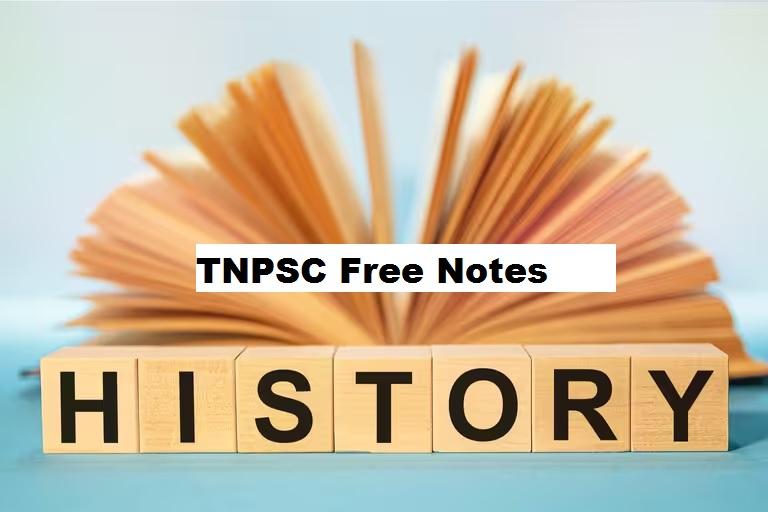இந்தக் கட்டுரையில், TNPSC குரூப் 1, குரூப் 2, குரூப் 2A, குரூப் 4 மாநிலப் போட்டித் தேர்வுகளான TNUSRB, TRB, TET, TNEB போன்றவற்றுக்கான முறைகள் இலவசக் குறிப்புகளைப் பெறுவீர்கள்.தேர்வுக்கு தயாராவோர் இங்குள்ள பாடக்குறிப்புகளை படித்து பயன்பெற வாழ்த்துகிறோம்.
Pallava’s society and economic life
Revenue and Taxation
Land grants recorded mainly on copper plates provide detailed information on land
revenues and taxation.
Revenue came almost exclusively from rural sources.
Two categories of taxes were levied on the village. The land revenue paid by the
cultivator to the state varied from 1/6 th to 1/10 th of the produce, and was collected by
the village and paid to the state collector.
In the second category were local taxes, also collected in the village but utilized for
services in the village itself.
The tax money was spent for repairing irrigation works, illuminating the temple, etc.
When the state land tax was inadequate, the revenue was supplemented by additional
taxes on draught cattle, toddy-drawers, marriage-parties, potters, goldsmiths,
washermen, textile-manufacturers, weavers, brokers, letter-carriers, and the makers of
ghee.
The loot and booty obtained in war added to the revenue of the state.
Pallava considered war to be very important and a series of sculptures depicting the
important events connected with the reign of Nandivarma Pallava, notably Pallava
troops attacking a fort are seen in the Vaikunta Perumal temple at Kanchipuram.
Pallava Army
Much of the state revenue went to maintain the army.
The king maintained a standing army under his direct control.
The army consisted of foot-soldiers, cavalry and a small force of elephants.
Cavalry, though effective, was expensive, as horses had to be imported.
The Pallavas developed a navy and built dockyards at Mamallapuram and
Nagapattinam.
Trade
Kanchipuram was an important trading centre in the Pallava period.
The merchants had to obtain license to market their goods.
Barter system generally prevailed but later the Pallavas issued gold and silver coins.
Merchants had their own organizations such as Manigramam.
In foreign trade, spices, cotton textiles, precious stones and medicinal plants were
exported to Java, Sumatra, Cambodia, Sri Lanka, China and Burma.
Mamallapuram was an important seaport.
Trade Guilds
Traders founded guilds and called themselves as sudesi, nanadesi, ainurruvar and
others.
Their main guild functioned at Aihole.
Foreign merchants were known as Nanadesi.
The chief of this guild is registered in the inscriptions as pattanswamy, pattnakilar, and
dandanayaka.
Its members were known as ayyavole-parameswariyar.
Maritime Trade
Unlike in the Ganges plain, where large areas were available for cultivation, the regions
controlled by the Pallavas and the Chalukyas commanded a limited income from land.
Mercantile activity had not developed sufficiently to make a substantial contribution to
the economy.
The Pallavas had maritime trade with south-east Asia, whereby now there were three
major kingdoms: Kambuja (Cambodia), Champa (Annam), and Srivijaya (the southern
Malaya peninsula and Sumatra).
On the west coast, the initiative in the trade with the West was gradually passing into
the hands of the foreign traders settled along the coast, mainly Arabs.
Society
Most scholars agree that Aryanisation or the northern influence on the south picked up
pace during the Pallava period.
The society divided into Brahmins, Kshyatrias, Vaishyas, and Sudras.
Some other Sub castes are divided based on occupation.
Brahmins as learned scholars in literature, astronomy, law and others functioned as the
royal counsellors.
They were exempted from paying taxes and capital punishment.
Land grants given to Brahmins were called as Brahmadeya.
The next important social group which ruled the state was called sat-kshatryas.
Not all the kshatryas were of warring groups; some of them were involved in trading as
well.
Next social group was Vaishyas they are trading group, maintained warriors for
protection and founded trade guilds.
Sudras the people who were at the bottom of the society worked in agriculture, animal
husbandry, and handicraft works.
Buddhism & Jainism lost its appeal as Saiva Nayanmars & Vainava Aazhvalrs grow
popularly.
**************************************************************************
| Adda247 TamilNadu Home page | Click here |
| Official Website=Adda247 | Click here |









